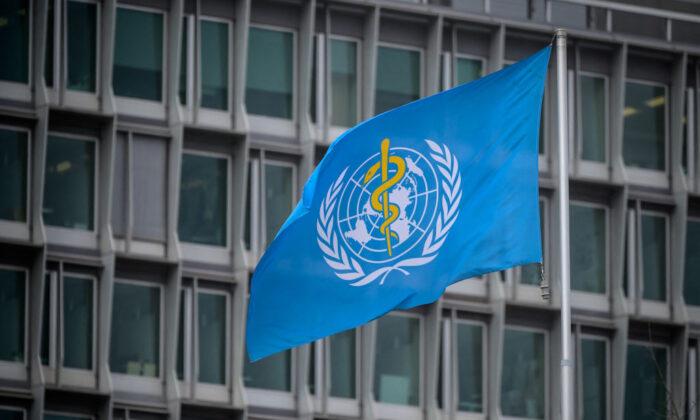The lead negotiator representing the United States in discussions on a global pandemic accord said in a statement this week that the United States is committed to the accord amid debate on the draft document.
The INB was set up by the World Health Assembly (WHA) in December 2021 to “draft and negotiate a convention, agreement or other international instrument under the Constitution of the World Health Organization to strengthen pandemic prevention, preparedness and response.”
Ambassador’s Recommendations
The U.S. pandemic negotiator for the proposed accord, Ambassador Pamela Hamamoto, said this week that the United States is committed to forming the accord as part of a “major component of the global health architecture for generations to come.”“Shared commitment, shared aspirations and shared responsibilities will vastly improve our system for preventing, preparing for, and responding to future pandemic emergencies,” she said. “We seek a Pandemic Accord that builds capacities; reduces pandemic threats posed by zoonotic diseases; enables rapid and more equitable responses; and establishes sustainable financing, governance, and accountability to ultimately break the cycle of panic and neglect.”
Hamamoto said the draft has a lot of work to build on and specifically said it is unbalanced toward response at the expense of prevention and preparedness.
“While we need to avoid duplicating substantive elements contained in the [International Health Regulations], such as surveillance and alerts, we need to discuss how best to address pandemic prevention and preparedness here,” she added. “These efforts should be mutually supportive and complementary.”
She added the United States would like to see a focus on “equity” across the draft, to be “inclusive and applicable for the improved health and wellbeing of all people” not only between countries, but “also within them.”
“Not just protecting populations from pandemics—but also from illness, death, and disrupted access to essential health care services during pandemics, including sexual and reproductive health services,” she said in the Feb. 27 letter.
Hamamoto said the United States did not support “common but differentiated responsibilities and capabilities,” something she said was “not appropriate” in the context of pandemic prevention, preparedness, and response.
The draft agreement explains the accord should emphasize “improving pandemic prevention, preparedness, response and recovery of health systems relies on a commitment to mutual accountability, transparency and common but differentiated responsibility by all States Parties and relevant stakeholders.”
The concept of common but differentiated responsibilities and capabilities says that all member nations are responsible for the health of their people.
“Given that the health of all peoples is dependent on the fullest cooperation of individuals and States, all Parties are bound by the obligations of the WHO [proposed accord],” the draft language states. “States that hold more resources relevant to pandemics, including pandemic-related products and manufacturing capacity, should bear, where appropriate, a commensurate degree of differentiated responsibility with regard to global pandemic prevention, preparedness, response and recovery.”
The draft states further the goal is to support every participating party to achieve the highest level of capacity while prioritizing specific needs and special circumstances of developing countries that may not be able to respond as well to a pandemic.
“We look forward to seeking common ground to best ensure universal application while also ensuring capacities are strengthened so that countries can meet their obligations.”

The Ambassador also said the United States had concerns about financing language in the accord related to specific allocations of domestic budgets or GDP, and hopes to work to identify appropriate financing methods for the accord.
She added the accord must “stand the test of time” while building on prior pandemics and also creating solutions that are “flexible and adaptable.”
What The Accord Could Do
“Countries have delivered a clear message that the world must be better prepared, coordinated and supported to protect all people, everywhere, from a repeat of COVID-19,” said Roland Driece, Co-Chair of the INB. “The decision to task us with the duty to develop a zero draft of a pandemic accord represents a major milestone in the path towards making the world safer.”Some are worried the accord could hinder the autonomy of individual nations when it comes to responding to pandemics, while others argue the accord has no real means of legal enforcement.
According to Nature, researchers are concerned the treaty in its current form is too weak to keep signatories from following its rules.
“It’s still quite heavily reliant on voluntary compliance,” Lee told Nature.
“There has never been a bigger power grab than this power grab—and it’s being led by the Biden administration,” Bachmann told Tony Perkins, president of the Family Research Council. “The whole purpose of this legislation would be that 194 countries, all of the member states of the UN, would give up their sovereignty to the World Health Organization over health care.”
American Autonomy
While the document (pdf) has some language in place for legal and non-legally binding agreements, the United States would remain autonomous even if it joins the treaty next year.“The Parties commit to safeguard the humanitarian principles of humanity, neutrality, impartiality and independence, and to facilitate the unimpeded access of humanitarian staff and cargo,” the zero draft says. “The commitment to facilitate such access is understood to be legally binding and to apply in all circumstances, consistent with humanitarian principles.”

Other language in the document containing legally binding language includes the sharing of information related to any viruses, such as the sharing of genomic sequencing under the proposed Pathogen Access and Benefit-Sharing (PABS) System.
“The PABS System will be consistent with international legal frameworks, notably those for collection of patient specimens, material and data, and will promote effective, standardized, real-time global and regional platforms that promote findable, accessible, interoperable and reusable data available to all Parties,” the zero draft states.
Nations are also encouraged to incorporate measures in line with their own national laws in order to protect human rights during pandemic preparedness, prevention, response, and recovery.
The draft document notes the goal of “reaffirming the principle of sovereignty of States Parties in addressing public health patterns, notably pandemic prevention, preparedness, response and health systems recovery.”
The WHO’s draft says the vision of the agreement is to strive for a world “where pandemics are effectively controlled” while also “recognizing the sovereign rights of countries.”
“States have, in accordance with the Charter of the United Nations and the principles of international law, the sovereign right to determine and manage their approach to public health, notably pandemic prevention, preparedness, response and recovery of health systems, pursuant to their own policies and legislation, provided that activities within their jurisdiction or control do not cause damage to their peoples and other countries,” the agreement reads. “Sovereignty also covers the rights of States over their biological resources.”





